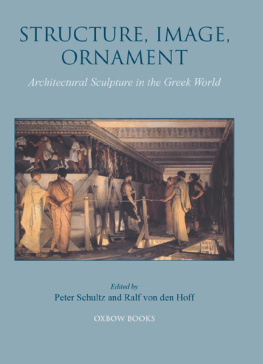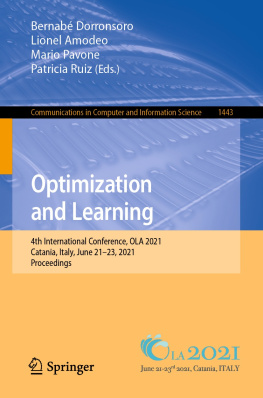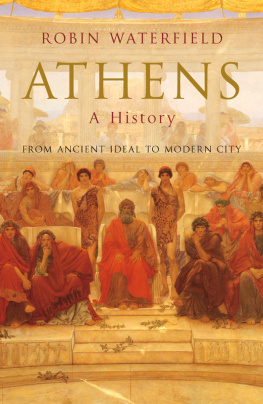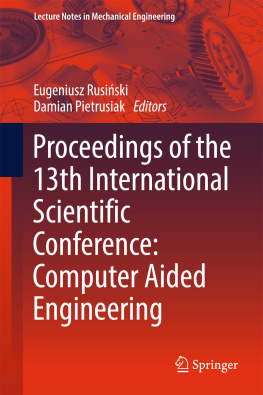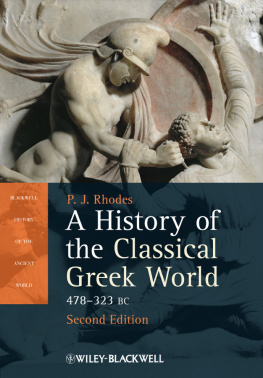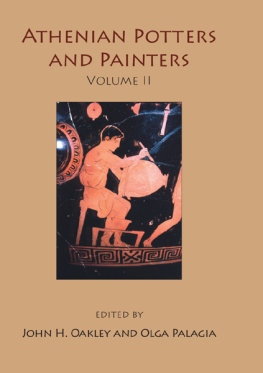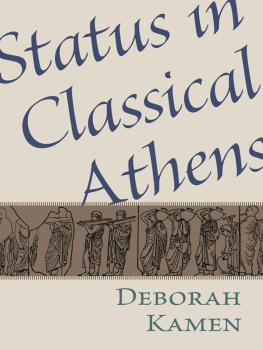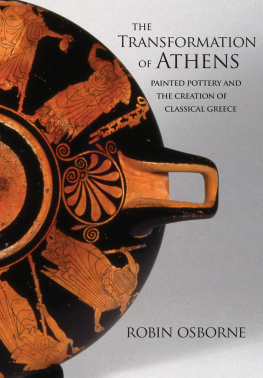Published by
Oxbow Books, Oxford, UK
Oxbow Books and the individual authors, 2009
ISBN 978 1 84217 344 2
EPUB ISBN: 978 1 78297 307 2
PRC ISBN: 978 1 78297 308 9
A CIP record for this book is available from the British Library
This book is available direct from
Oxbow Books, Oxford, UK
(Phone: 01865-241249; Fax: 01865-794449)
and
The David Brown Book Company
PO Box 511, Oakville, CT 06779, USA
(Phone: 860-945-9329; Fax: 860-945-9468)
or from our website
www.oxbowbooks.com
This volume was made possible by a generous grant from the Fritz-Thyssen-Stiftung, Cologne.
Library of Congress Cataloging-in-Publication Data
Structure, image, ornament : architectural sculpture in the Greek world : proceedings of an international
conference held at the American School of Classical Studies, 27-28 November 2004 / edited by Peter Schultz and
Ralf von den Hoff.
p. cm.
Includes bibliographical references.
ISBN 978-1-84217-344-2
1. Sculpture, Greek--Congresses. 2. Decoration and ornament, Architectural--Greece--Congresses. 3.
Architecture--Greece--Congresses. I. Schultz, Peter, 1972- II. Hoff, Ralf von den. III. American School of Classical
Studies at Athens.
NB90.S77 2009
733.30938--dc22
2009033217
Front cover: Pheidias Showing the Frieze of the Parthenon to his Friends (1868) by Sir Lawrence Alma-Tadema
Birmingham Museums & Art Gallery
Printed in Great Britain by
CPI Antony Rowe, Chippenham and Eastbourne
Contents
Peter Schultz and Ralf von den Hoff |
Robin Osborne |
Peter Higgs |
Patricia A. Butz |
David Scahill |
Tonio Hlscher |
Peter Schultz |
Katherine Schwab |
Andrs Patay-Horvth |
Ralf von den Hoff |
Judith M. Barringer |
Iphigeneia Leventi |
Hilda Westervelt |
Erik stby |
Justin St. P. Walsh |
Martin Bentz |
Lorenz Winkler-Horaek |
Foreword
Most of the papers in this volume are based on a conference hosted by the American School of Classical Studies, Athens and the Deutsches Archologisches Institut, Athens which ran 2728 November 2004. It was the second conference on ancient Greek sculpture organized by the editors of this volume in cooperation with these institutions after Early Hellenistic Portraiture: Image, Style Context in 2002, and it was the first major conference event held in the newly finished Cotsen Hall. The purpose of the colloquium was to bring together an international team of experts in the field of architectural sculpture to discuss problems specific to this sub-field. The conference was a success not so much because of our efforts but rather because of our superb speakers and an energetic audience. While the conference was well received, we did feel that further papers were required to fill out a proper proceedings and to cover the important field of Greek architectural scuplture as widely as needed. For this reason, we contacted Martin Bentz, Patricia Butz, Robin Osborne, Katherine Schwab, Justin St. P. Walsh, Hilda Westervelt and Lorenz Winkler-Horacek all of whom had been doing important work in the field of architectural sculpture; while these scholars were not able to present their research in Athens, we are honored by their contributions to this volume. Our further thanks go to those collegues, who participated in the Athens conference and contributed papers to this volume. They will make this book a success. We also are indebted to Dorothy King, Vinzenz Brinkmann, Andreas Grner, Rudolf Knel and Richard Neer, who provided contributions to the conference and highly enriched our discussions in Athens.
The conference was sponsored by the American School of Classical Studies, the Arcadia Center for Hellenic, Balkan and Mediterranean Studies, the Society for Messenian Archaeological Studies, Concordia College, Moorhead, MN, the Deutsches Archologisches Institut, Athens and the Fritz-Thyssen-Stiftung, Cologne. The Fritz-Thyssen-Stiftung also liberally supported the publication. We are deeply indebted to Stephen Tracy, Jan Sanders, Petros Themelis, Mark Krejci and Wolf-Dietrich Niemeier for their constant support for this project. Secretarial help with the manuscript was provided by Deb Hersrud at Concordia College and Silke Lauinger as well as Monika Schubert at the Institut fr Archologische Wissenschaften / Klassische Archologie der Universitt Freiburg. We are also grateful to Clare Litt, Richard Purslow and, especially, David Brown for patiently supporting the production of this volume; the following text is a testament to their faith in us.
The authors choices in transliterating Greek has been respected in the text. English or American usage and spelling have also corresponded to authors preference. Bibliographic abbreviations follow the guidelines of The American Journal of Archaeology at http://www.ajaonline.org/index.php?ptype=page&pid=8 (downloaded 15 April 2008).
Peter Schultz
Concordia College
Ralf von den Hoff
Institut fr Archologische Wissenschaften
der Albert-Ludwigs-Universitt Freiburg
Abteilung fr Klassische Archologie
July 2008
I. STRUCTURE AND ORNAMENT
The Narratology and Theology of Architectural Sculpture, or What you can do with a Chariot but cant do with a Satyr on a Greek Temple
Robin Osborne
Introduction
One of the legacies of the Roman world is the idea that the context in which the work of art is viewed is relatively unimportant. Removing sculptures from the sanctuaries or civic spaces in which they had originally been erected and redisplaying them in quite different contexts was a Roman sport from at least the second century B.C. onwards. Grand tourists emulated the Roman lite by the way in which they removed both Roman antiquities from their original sites and Greek antiquities from their secondary Roman homes. With the growth of the universal museum in the eighteenth and nineteenth centuries the depredations of private individuals were made the very premise of civilizing knowledge of the world.
Academic practices have reinforced rather than undermined this belief that the work of art can and does perform its work quite independently of the context in which it is viewed. The art historians projection of dual images of works of art so that comparison can be made with works by the same or related artists, with works of the same or similar subjects, and so on, implies a fundamental dismissal of original viewing contexts. Unique works or art have their own history spun for them following methods essentially parallel to the study the endlessly reproducable text. Yet those who study works of art have an obsession with saying something about the original and regard with some curiosity those few whose interest focuses on reproductions of images.
The investment of the academy in the notion that works of art can be understood without understanding the context in which those works were first displayed is such that the bizarre nature of that assumption is rarely registered. We all of us daily determine our reactions to images by the contexts in which we view them. Images that we take for granted on billboards would cause some surprise were we to find them framed upon walls of a friends living room. Images which on the walls of art galleries serve only as markers of a particular era in the history or art become indicators of conservatism or trendiness when transplanted to wall of public or private buildings which are primarily devoted to other pursuits. Altarpieces invite quite different viewing when transferred from sacred to secular space.
Next page
